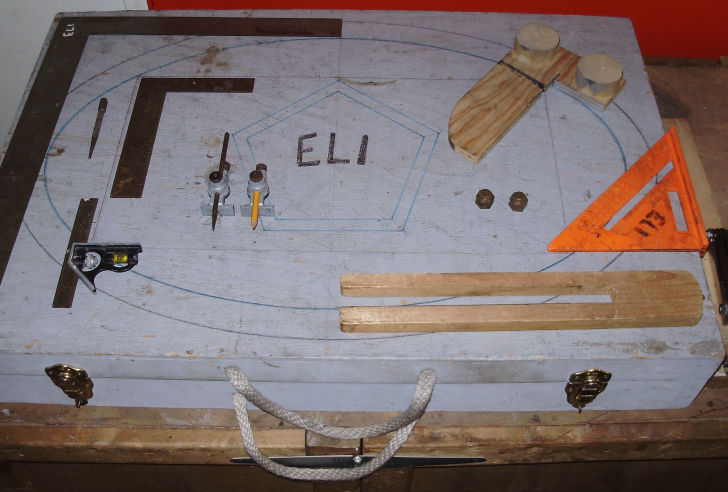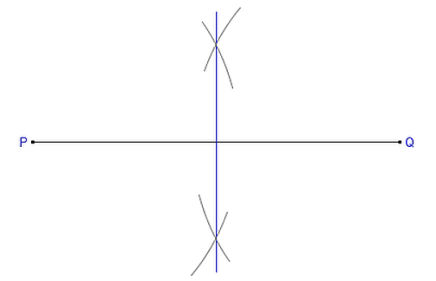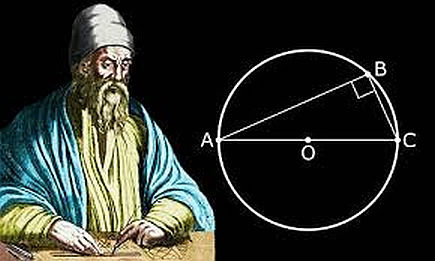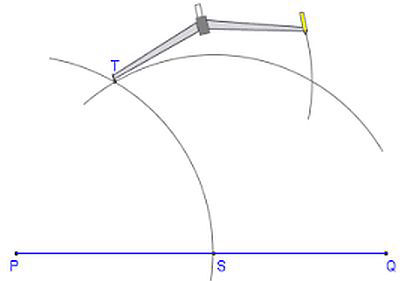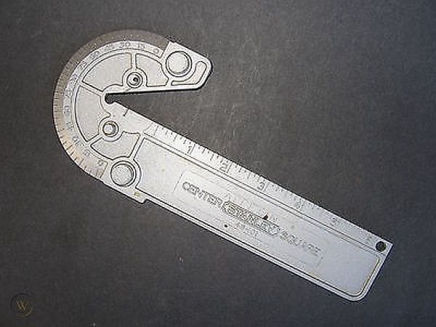GEOMETRY
I've been tossing around terms like; erect a perpendicular, strike an arc; geometry.
Unlike what you may have thought
in Middle School; Geometry is your friend.
The most frequently used method for erecting a perpendicular
is by reference to a precise copy of a right angle - Framing/Rafter,
Speed, Combination, Try, Drywall, Miter, (the Sliding Bevel)
and the Stanley 46-101 Center Square.
The 3,4,5 right triangle and comparing diagonals? Definite force
multipliers. However, all (except the Try, Miter and Sliding Bevel squares)
involve measurement.
